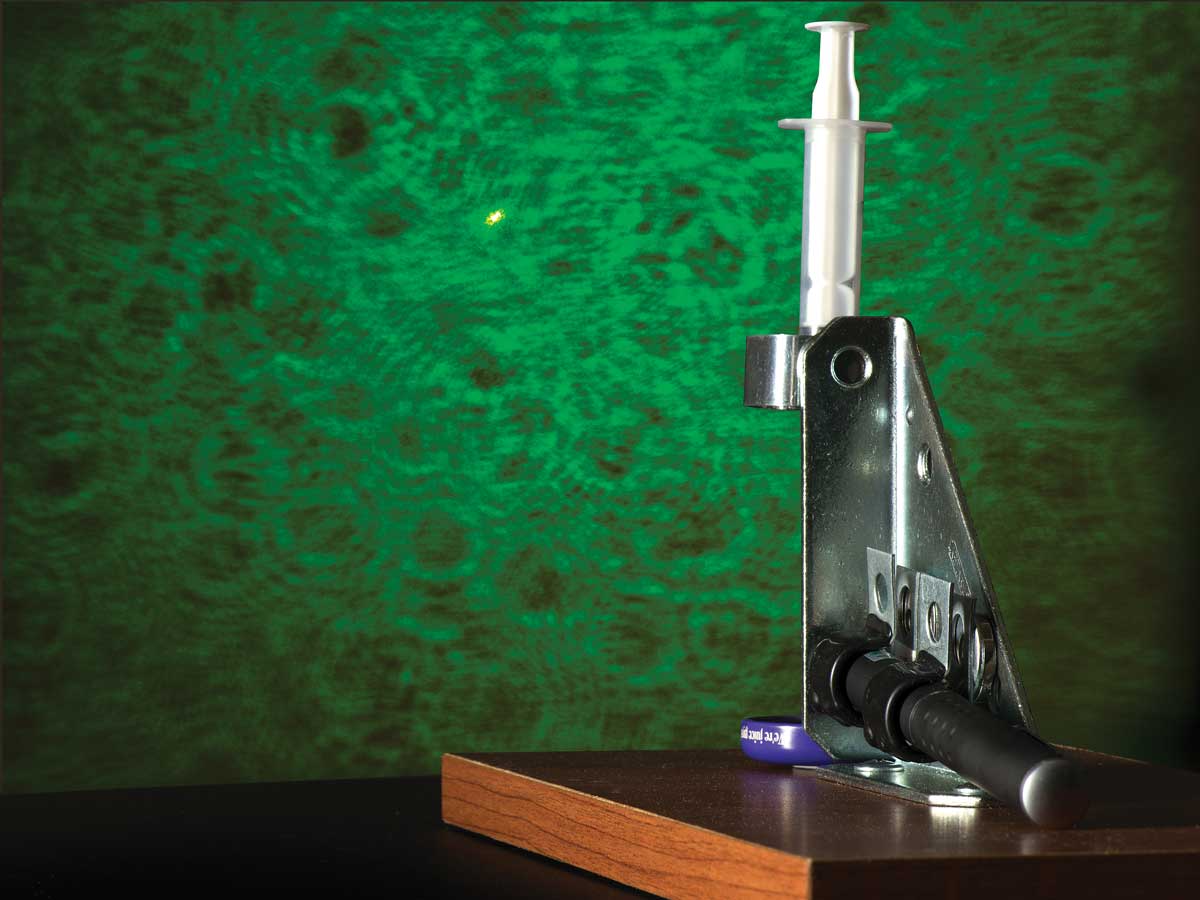Inspired by Adam Munich’s page about his DIY laser microscope, (makezine.com/go/teravolt), I built this project and discovered it’s near the top of the list when it comes to getting the most bang for your buck. Whether you’re a scientist, a science educator, or just a bright curious monkey, you really have to try this one for yourself. A common laser pointer, a drop of dirty water, and boom — giant microbes wriggling on the walls!
The tricky part is getting everything aligned — the laser, the projection surface, the hanging drop of water — but this simple stand built from junk-box odds and ends makes it easy. The laser and syringe are mounted to cheap hardware clips on super-magnets that allow for easy adjustments, but fix everything in position once you’ve got it tuned.


















